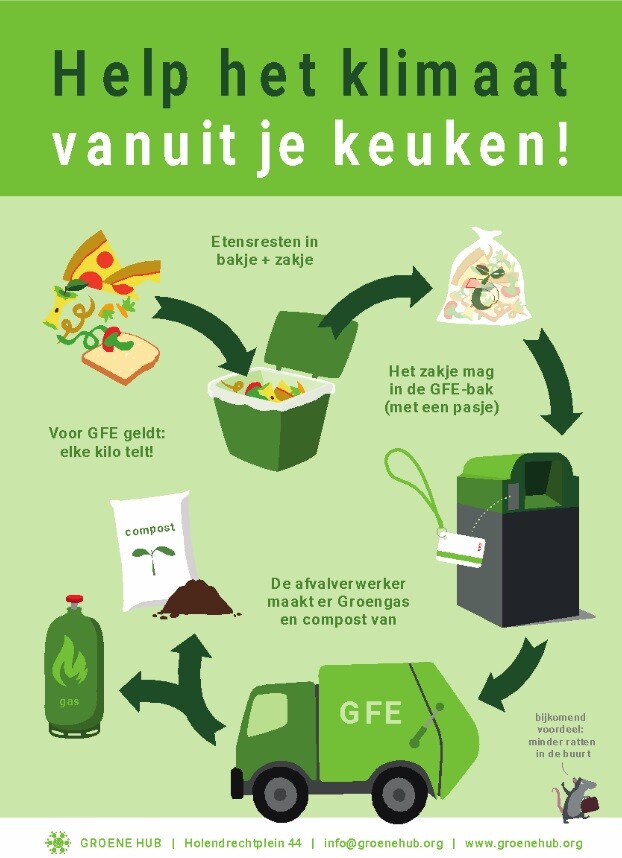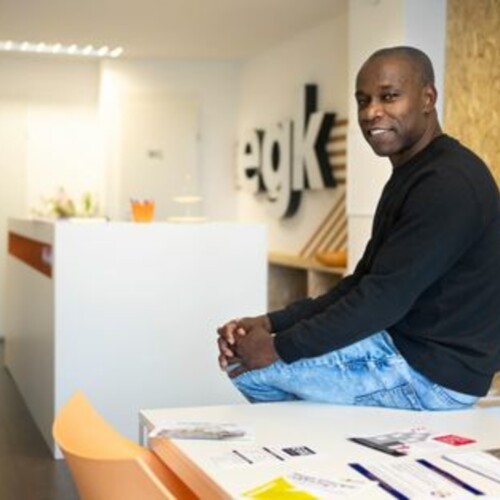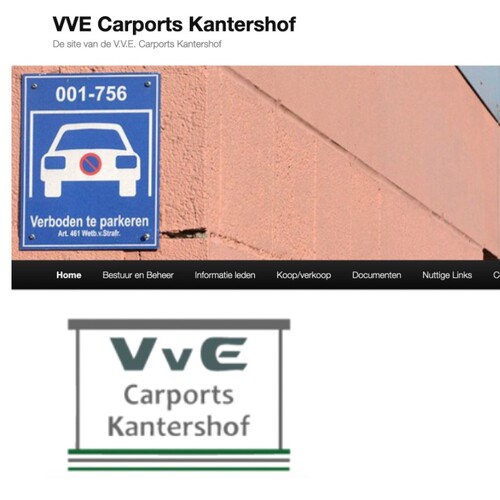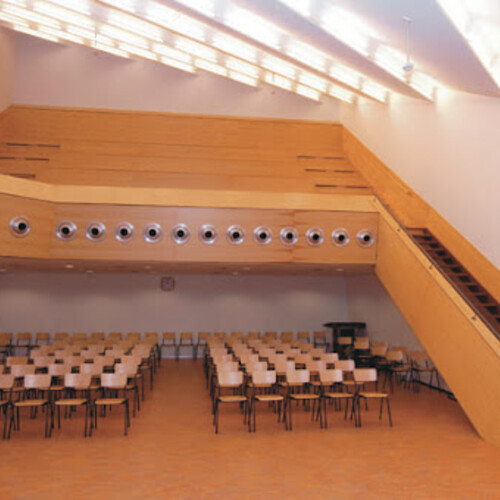The Groene Hub co-manages the collection of biodegradable waste. Local food scraps are collected and with the help of residents, the municipality and a waste company. The Groene Hub ensures that biodegradable food scraps (green waste) from local residents are collected in the 20 cocoons placed throughout the neighbourhood. The green waste is then either composted or turned into green gas. Through the Groene Hub Newsletter the residents are kept abreast of how much green waste is assembled in each cocoon, and as an incentive the participants can pick up a bag of compost.
To promote a circular economy, it is important to address the issue of waste. Too much biodegradable waste is still being burned at the moment, when it could be reused. To combat the unnecessary burning of waste, residents of the Gaasperdam neighborhood in Amsterdam Zuidoost started the collection of vegetable, fruit and food waste (GFE) thanks to a collaboration among the Groene Hub, the Municipality (its Waste and Raw Materials Department), waste processor company Meerlanden and residents. Twenty GFE cocoons were placed in the neighborhood for local residents to drop off their GFE. Bio-digesters from Meerlanden converted collected GFE into green gas and compost. In the future, more bio digesters may be placed in the neighborhood. That way leftover dinner, potato peels and coffee grounds are no longer "waste," but sources of new energy and compost. Together with the Green Hub, researchers from Utrecht University of Applied Sciences Dr. Suzanne de Bakker and Laura Meijer researched what residents encountered while separating their GFE. What do residents currently do when they separate their GFE? What is their motivation and what are the barriers local residents encounter? Analysis of interviews with residents revealed that neighborhood residents were happy for the opportunity to dispose of their GFE separately and they gained insight into their behavior. However, there is some reluctance to participate. And the passes to open the cocoons don't always work.
It's convenient & easy
Residents who separately dispose of their GFE found it easy to incorporate into their routine of existing household chores. Often people who participate in the GFE project already are in the habit of separating other waste, such as paper and glass, so the GFE separation is a relatively simple addition. The countertop container in which food scraps are collected is convenient and works as a reminder to separate waste. Although local residents sometimes indicate that mold develops in the receptacle, or that it starts to smell in the summer, most gfe separators do not see this as a huge problem: "If you find the receptacle stinks, then you should empty it faster. Once the GFE waste is collected, residents take it to a cocoon. They regularly pass by a cocoon and then take the GFE waste with them: 'Oh I'll be cycling past it anyway'.

The Groene Hub received bags of compost from Meerlanden. If you participate in the separate collection of food waste and garden waste, come by to pick up a free bag of compost! Even if you don't participate, you can come by. We'll tell you why it's good to keep all your food waste separate from the garbage. And how you can participate. Then, of course, you will still receive a bag.
We are also currently working on a social media campaign for GFE/T. Are you in a neighborhood app or facebook group in your neighborhood, or do you manage a news letter and think gfe/t is important too? Please contact us, stop by or send a message to peter@groenehub.org.
Medebeheer site van de Groene Hub
 Groene Hub
Groene Hub

